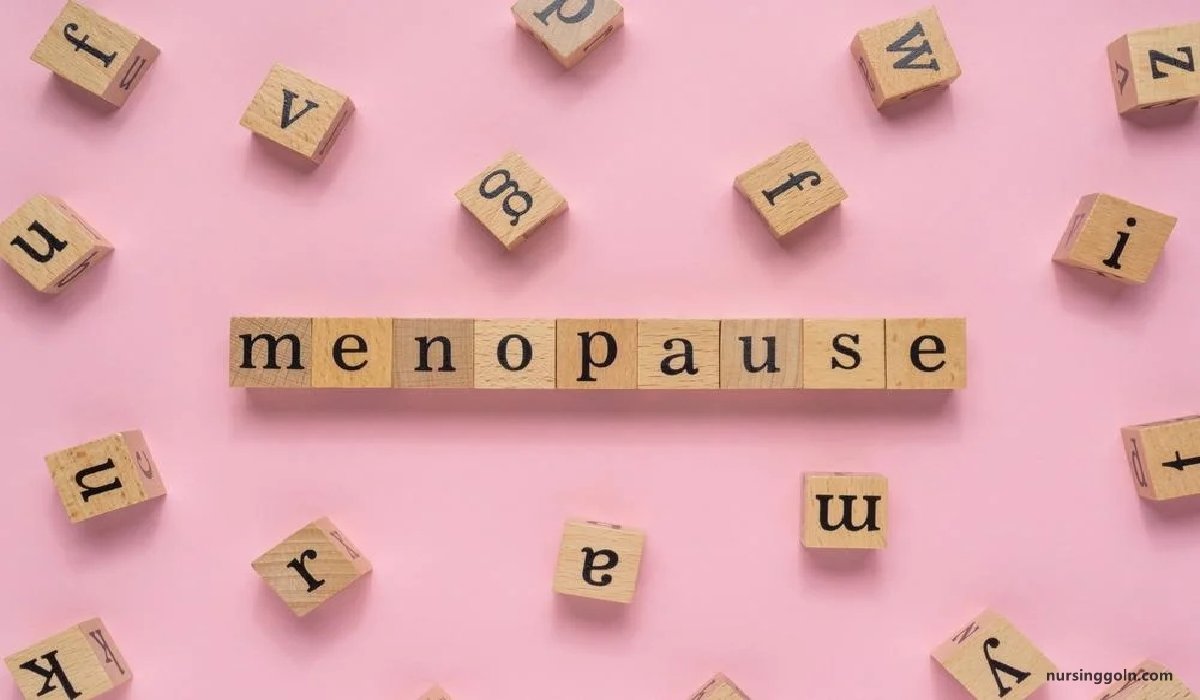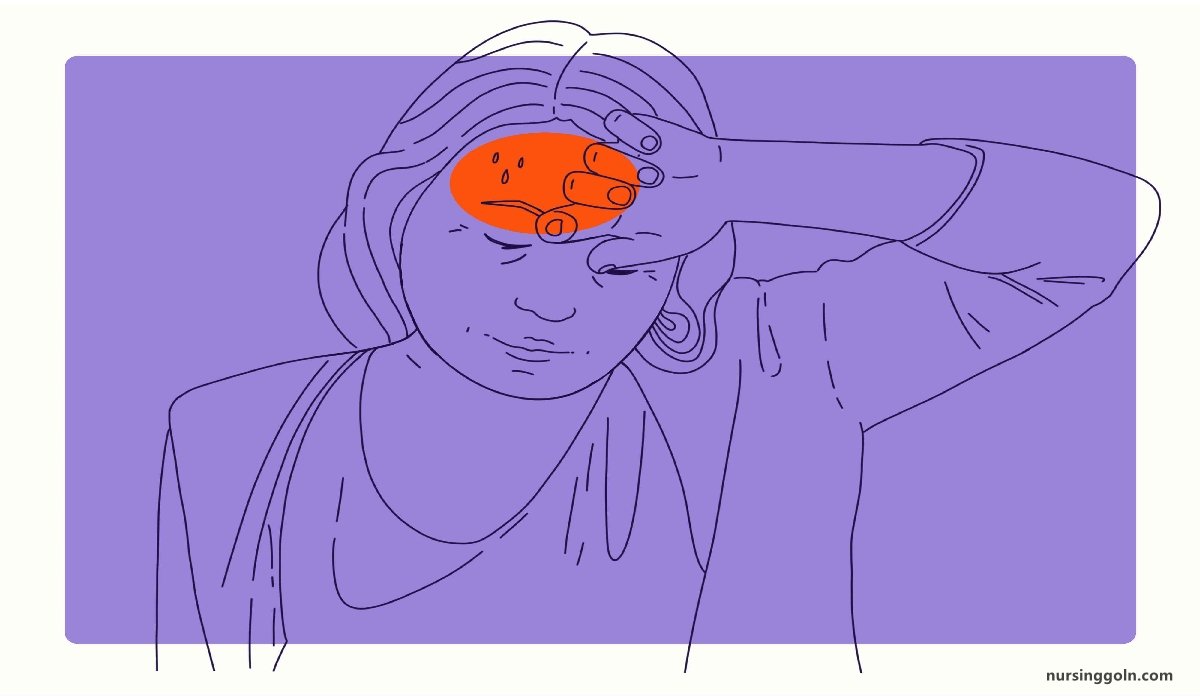Concept of Menopause – This course is designed to understand the concept of community health nursing: nurses’ roles and interventions in family health, school health, occupational health, environmental health, elderly health care, gender issues, disaster management and principles and terminology of epidemiology. The aim of the course is to acquire knowledge and skills in community health nursing.

Concept of Menopause
Permanent cessation of menstruation for at least one year at the end of reproductive life due to ovarian follicular activity cycle is called menopause.
Or,
Menopause, also known as the climacteric, is the time in most women’s lives when menstrual periods stop permanently, and they are no longer able to bear children. Menopause typically occurs between 49 and 52 years of age
Complications/Signs and Symptoms of Menopause:
A. Vasomotor symptom:
- Hot flushes
- Insomnia
- Night sweats
B. Urogenital symptoms:
- Urinary incontinence
- Dysuria
- Recurrent urinary tract infection
- Dysparunia
- Loss of libido
- Vaginal dryness
- Genital prolapsed
C. Neuro-endocrine symptoms:
- Dizziness
- Headache
- Insomnia
- Irritability
- Palpation
- Depression
- Alzheimers disease
D. Skeletal disease:
- Osteoporosis
- Bone pain
- Fracture of bones
E. Cardiovascular disease:
- Coronary heart disease
- Cerebro-vascular
F. Skin changes are:
- Dectease in elasticity
- Skin becomes dry as a result decreasing sweats and sebaceous glands
- Decrease melanopore activity
- Decrease thermal insulting capacity
Management of Menopausal Syndrome:
A. History:
- Assessment of mental buildup of the patient
- Her social and economical status
- Sexual life
- Any gynecological problem
- Obstetric history
- Family history: Osteoporosis, hyperlipidaemia, HTN, DM.
- Smoking habit, dietary habit
- Work pattern – Weight bearing exercise or sedentary work
- H/O thrombo-embolism
- Presence of vasomotor, psychological and urogenital symptoms
- Assessment of risk factors for the development of osteoporosis and coronary heart disease
B. Physical exam:
- Height and weight
- Obesity
- BP
- Examination of breasts
- Examination of abdomen and pelvis to exclude any gynecological abnormality
C. Investigations:
- Estimation of blood glucose level
- Pap smear
- Pelvic ultrasound
- Progesterone challenge test
- Endometrial biopsy/Aspiration
- Baseline mammogram
- Lipid profile
- Bone marrow density
- Liver function test
- Hormone profile
D. Treatment:
(a) General:
- Explanation and advice
- Mild sedatives at night for better sleep
- Calcium supplement
b) Specifie: Hormone replacement therapy – Estrogen, progesterone, and tibolone
E. Follow up: One hormone replacement therapy is initiated, the patient is evaluated after 3 month
Parameters to be assessed-
- Severity of symptoms
- Any vaginal bleeding
- Any difficulties in Rx
- BP
- Breast and pelvic exam
F. Surveillance:
- Next visit 6 months later
- Yearly after wards
- Pap smear every 3 year if it is negative
- Mammography every 3 year if there is no abnormality

Management of a Case of Post-Menopausal Syndrome:
A. History:
- Assessment of mental build up of the patient
- Her social and economical status
- Sexual life
- Any gynecological problem
- Obstetric historys
- Dietary habit
- Family history: Osteoporosis, hyperlipidaemia, HTN, DM.
- Smoking habit, dietary habit
- Work pattern – Weight bearing exercise or sedentary work
- H/O thrombo-embolism
- Presence of vasomotor, psychological and urogenital symptoms
- Assessment of risk factors for the development of osteoporosis and coronary heart disease
B. Physical examination: It includes height, weight, obesity, BP, examination of breast, abdomen and pelvis.
C. Investigation:
- Estimation of blood glucose level
- Pap smear
- Pelvic USG
- Progesterone challenge test
- Endometrial biopsy/Aspiration
- Baseline mammogram
- Lipid profile
- Bone marrow density
- Liver function test
- Hormone profile
D. Treatment:
(a) General:
- Explanation and advice: Regarding diet exercise, avoidance of smoking, spicy food, hot bath, coffee.
- Mild sedatives at night for better sleep
- Calcium supplement
(b) Specific:
- Hormone replacement therapy
- Selective estrogen receptor modulators
- Non hormone agent-
✓ Calcitonin
✓ Clonidine
✓ Biphosphonates

manage a case of post-menopausal bleeding
A. History:
- Patient profile: Postmenstrual women, age of menopause
- Presenting complication:
✓ P/V bleeding
✓ Blood stained discharge
✓Something coming down per vagina
✓ Local injury
✓ Introduction of foreign body
✓ Urinary problems: Dysuria, increased frequency of micturation
- H/O past illness: TB, Bleeding disorder
- Family history: Positive for genital malignancy
- Drug history: Estrogen therapy
- Menstrual history: Menopause, menstrual pattern prior to menopause.
B. Clinical examination:
I. General examination: Nutritional status, anemia, jaundice, petichiae, purpura, lymph node, Temperature, Pulse, BP
II. Local and systemic examination:
- Per abdominal: Any lump in the lower abdomen, Hepatomegaly, ascites
- Pelvic examination: Discharge, uterus outside the introitus with decubitus ulcer, any growth or indurations over vulval area.
- Bimanual examination: Cervix may be hard, fixed, bleed on touch
- Speculum examination
- Per rectal examination
C. Investigation:
- Blood TC, DC, ESR, H6%, BT, CT, total platelet count
- Urine RME Diagnostic curettage
- Cervical aspiration cytology
- Fractional curettage
- Hysteroscopic evaluation and biopsy
- Laparoscopy in ovaries or adnexal mass
- Cystoscopy
- Sigmoidoscopy
- USG of uterus and adnexa
D. Treatment:
- If no cause is detected, observation and conservative treatment
- Recurrent or continue bleeding: Hysterectomy with bilateral salpingo-oophorectomy
Read more:
